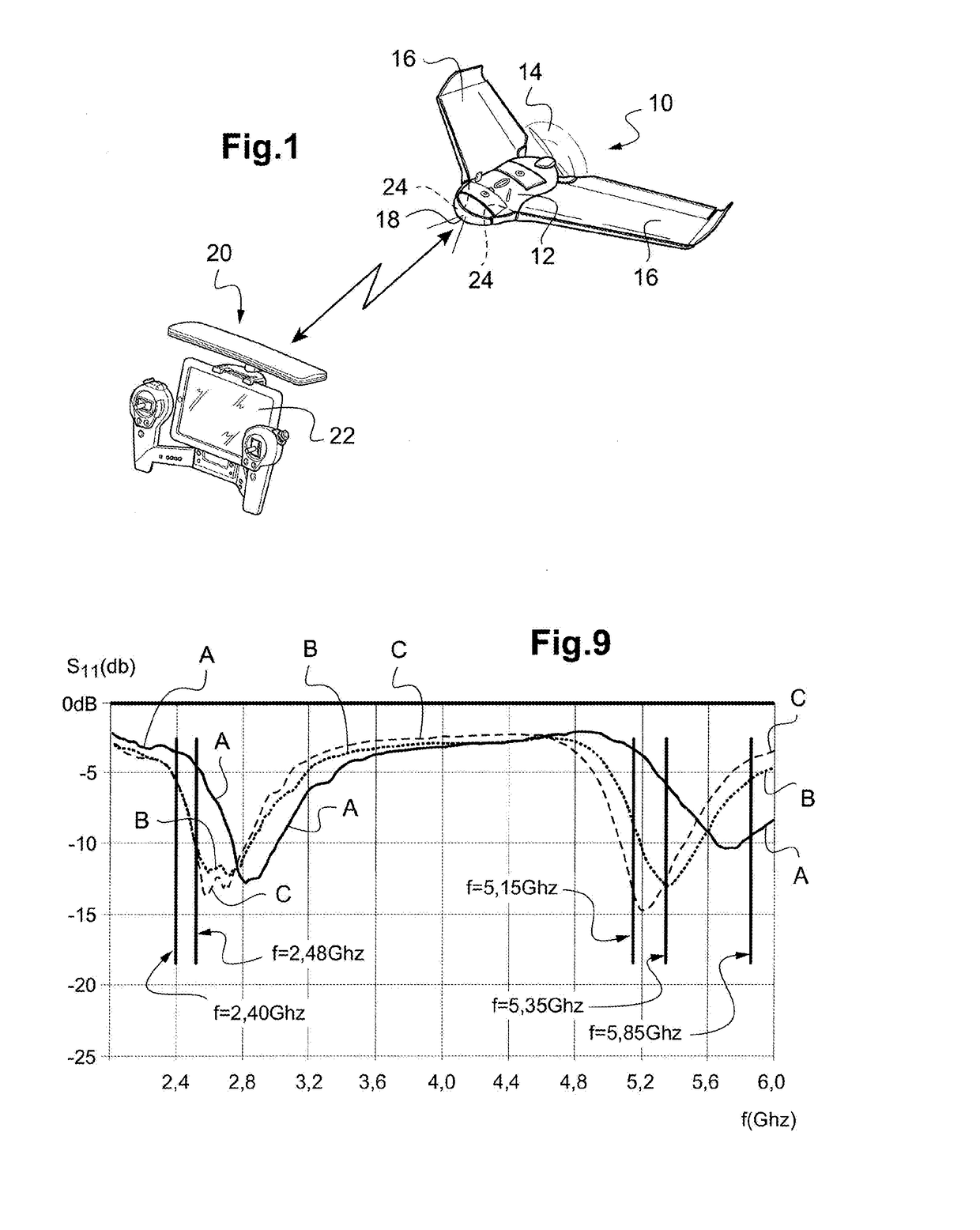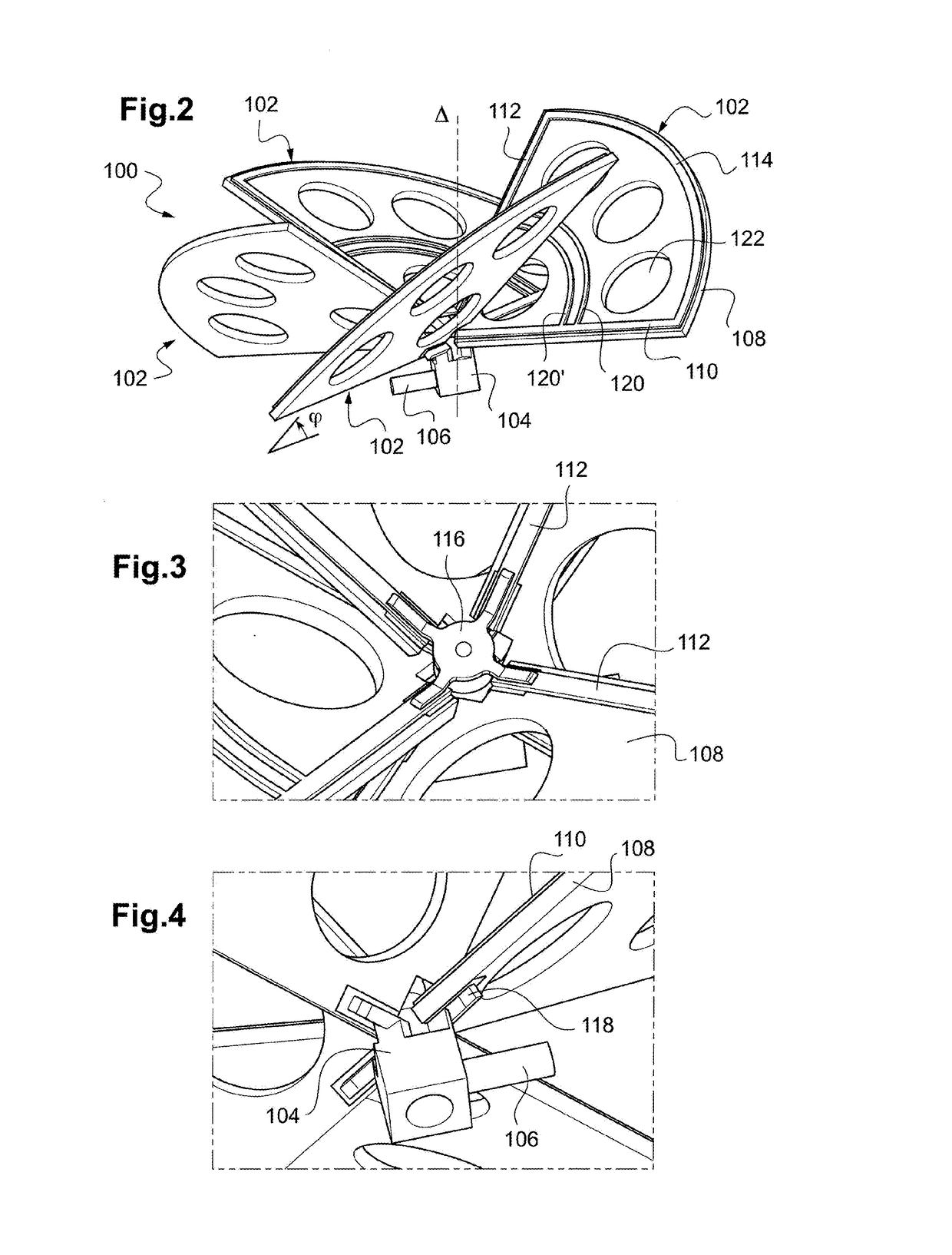WIFI antenna of the clover-leaf or skew-planar wheel type for a drone
a drone and clover-leaf technology, applied in the field of radio, can solve the problems of linear polarization, sporadic loss of data and commands exchanged, and drawback of irregular radiation pattern, so as to minimize the manual operation of manufacturing
- Summary
- Abstract
- Description
- Claims
- Application Information
AI Technical Summary
Benefits of technology
Problems solved by technology
Method used
Image
Examples
first embodiment
[0050]FIGS. 2 to 4 illustrate an example of the antenna of the invention, which is an antenna particularly well adapted to centimetric frequency bands such as WiFi bands (2.40 GHz-2.4835 GHz and 5.15 GHz-5.85 GHz).
[0051]This application, although being particularly advantageous because responding to precise problems in particular in the field of antennas for drones, is however not limitative, and the configuration of antenna of the invention may be used in other fields, for other applications and in other frequency bands.
[0052]In FIGS. 2 to 4 is illustrated the antenna 100 of the invention, which is an antenna of the so-called clover-leaf or skew-planar wheel type, which comprises a plurality of elementary antennas 102, generally three in number (clover-leaf) or four in number (skew-planar wheel). Each elementary antenna 102 comprises a planar loop extending in a respective plane inclined with respect to the main axis Δ of the antenna, the different loops being non-coplanar and dist...
second embodiment
[0065]FIGS. 5 to 8 illustrate the antenna of the invention, also adapted to a communication in the two WiFi frequency bands.
[0066]In these FIGS. 5 to 8, the same numerical references as those appearing in FIGS. 2 to 4 are used to denote functionally similar elements, which have already been described and which won't be described again.
[0067]In this second embodiment, the inclined structure of the conductive pattern defining the loops is formed on a flexible support 124 of the “flex PCB” type, typically made of polyimide.
[0068]This flexible support 124 has approximately the shape of a circular disc, in which have been formed radial notches 126 delimiting four circular sectors of 90° opening (a quarter of a circle), which define and individualize the four elementary antennas 102.
[0069]In the vicinity of the central region of the antenna, the four circular sectors are connected to the central portion 130 by narrow bridges of matter 132 (see in particular FIG. 7), acting as a hinge, tha...
PUM
 Login to View More
Login to View More Abstract
Description
Claims
Application Information
 Login to View More
Login to View More - R&D
- Intellectual Property
- Life Sciences
- Materials
- Tech Scout
- Unparalleled Data Quality
- Higher Quality Content
- 60% Fewer Hallucinations
Browse by: Latest US Patents, China's latest patents, Technical Efficacy Thesaurus, Application Domain, Technology Topic, Popular Technical Reports.
© 2025 PatSnap. All rights reserved.Legal|Privacy policy|Modern Slavery Act Transparency Statement|Sitemap|About US| Contact US: help@patsnap.com



